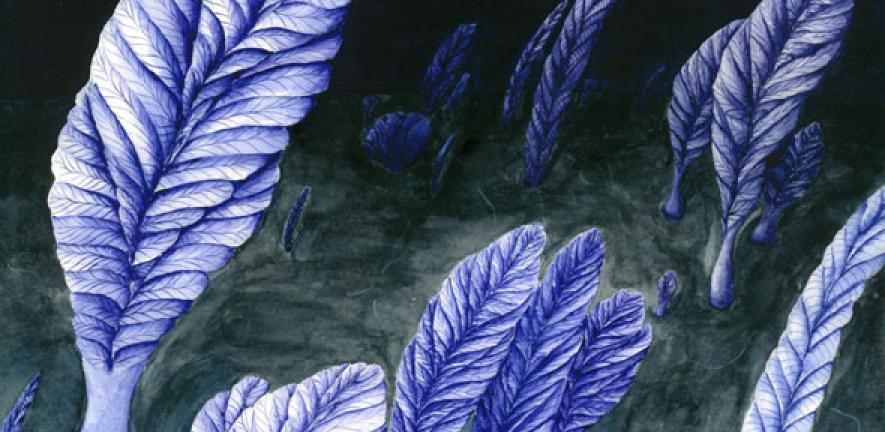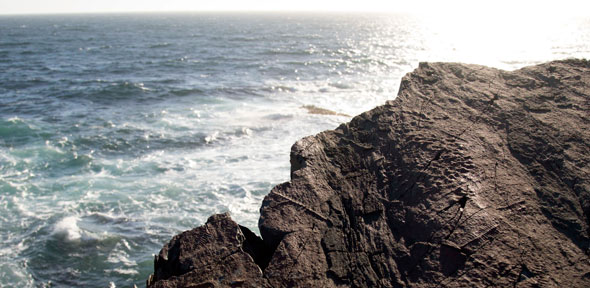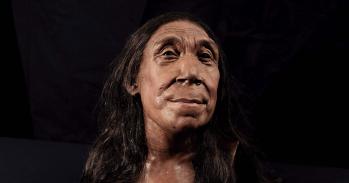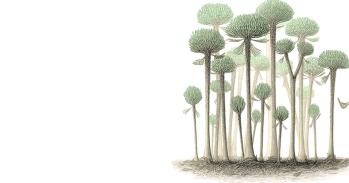
Some of the earliest complex organisms on Earth – possibly some of the earliest animals to exist – got big not to compete for food, but to spread their offspring as far as possible.
Some of the earliest complex organisms on Earth – possibly some of the earliest animals to exist – got big not to compete for food, but to spread their offspring as far as possible.
Reproduction appears to have been the main reason that life on Earth got big when it did.
Emily Mitchell
The research, led by the University of Cambridge, found that the most successful organisms living in the oceans more than half a billion years ago were the ones that were able to ‘throw’ their offspring the farthest, thereby colonising their surroundings. The results are reported in the journal Nature Ecology and Evolution.
Prior to the Ediacaran period, between 635 and 541 million years ago, life forms were microscopic in size, but during the Ediacaran, large, complex organisms first appeared, some of which – such as a type of organism known as rangeomorphs – grew as tall as two metres. These organisms were some of the first complex organisms on Earth, and although they look like ferns, they may have been some of the first animals to exist – although it’s difficult for scientists to be entirely sure. Ediacaran organisms do not appear to have mouths, organs or means of moving, so they are thought to have absorbed nutrients from the water around them.
As Ediacaran organisms got taller, their body shapes diversified, and some developed stem-like structures to support their height.
In modern environments, such as forests, there is intense competition between organisms for resources such as light, so taller trees and plants have an obvious advantage over their shorter neighbours. “We wanted to know whether there were similar drivers for organisms during the Ediacaran period,” said Dr Emily Mitchell of Cambridge’s Department of Earth Sciences, the paper’s lead author. “Did life on Earth get big as a result of competition?”
Mitchell and her co-author Dr Charlotte Kenchington from Memorial University of Newfoundland in Canada examined fossils from Mistaken Point in south-eastern Newfoundland, one of the richest sites of Ediacaran fossils in the world.

Earlier research hypothesised that increased size was driven by the competition for nutrients at different water depths. However, the current work shows that the Ediacaran oceans were more like an all-you-can-eat buffet.
“The oceans at the time were very rich in nutrients, so there wasn’t much competition for resources, and predators did not yet exist,” said Mitchell, who is a Henslow Research Fellow at Murray Edwards College. “So there must have been another reason why life forms got so big during this period.”
Since Ediacaran organisms were not mobile and were preserved where they lived, it’s possible to analyse whole populations from the fossil record. Using spatial analysis techniques, Mitchell and Kenchington found that there was no correlation between height and competition for food. Different types of organisms did not occupy different parts of the water column to avoid competing for resources – a process known as tiering.
“If they were competing for food, then we would expect to find that the organisms with stems were highly tiered,” said Kenchington. “But we found the opposite: the organisms without stems were actually more tiered than those with stems, so the stems probably served another function.”
According to the researchers, one likely function of stems would be to enable the greater dispersion of offspring, which rangeomorphs produced by expelling small propagules. The tallest organisms were surrounded by the largest clusters of offspring, suggesting that the benefit of height was not more food, but a greater chance of colonising an area.
“While taller organisms would have been in faster-flowing water, the lack of tiering within these communities shows that their height didn’t give them any distinct advantages in terms of nutrient uptake,” said Mitchell. “Instead, reproduction appears to have been the main reason that life on Earth got big when it did.”
Despite their success, rangeomorphs and other Ediacaran organisms disappeared at the beginning of the Cambrian period about 540 million years ago, a period of rapid evolutionary development when most major animal groups first appear in the fossil record.
The research was funded by the Natural Environment Research Council, the Cambridge Philosophical Society, Murray Edwards College and Newnham College, Cambridge.
Reference
Emily G. Mitchell and Charlotte G. Kenchington. ‘The utility of height for the Ediacaran organisms of Mistaken Point.’ Nature Ecology and Evolution (2018). DOI: 10.1038/s41559-018-0591-6
Inset image:
A close-up view of the Mistaken Point ‘E’ surface community. Credit: Emily Mitchell.

The text in this work is licensed under a Creative Commons Attribution 4.0 International License. Images, including our videos, are Copyright ©University of Cambridge and licensors/contributors as identified. All rights reserved. We make our image and video content available in a number of ways – as here, on our main website under its Terms and conditions, and on a range of channels including social media that permit your use and sharing of our content under their respective Terms.




